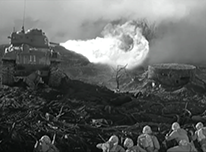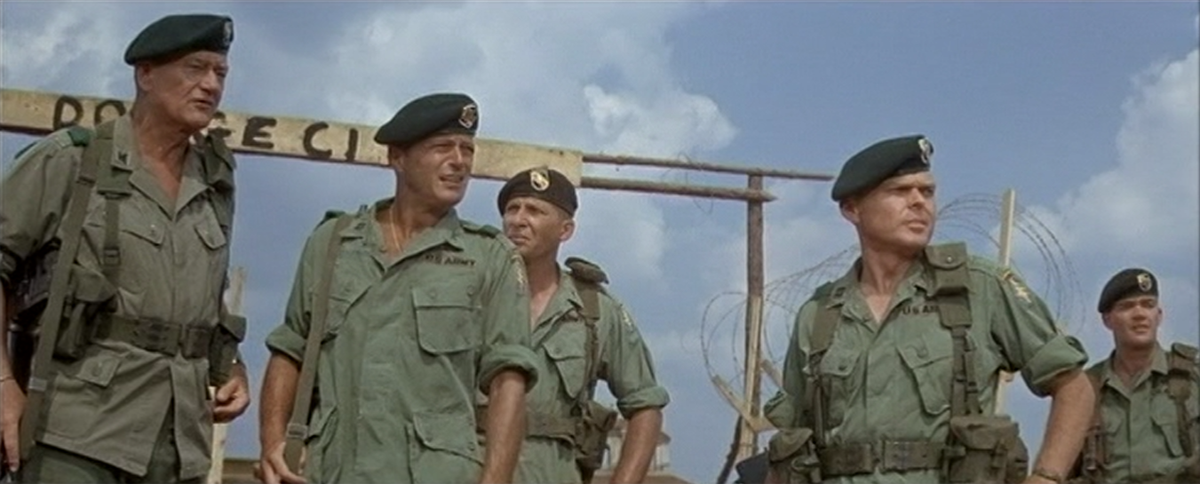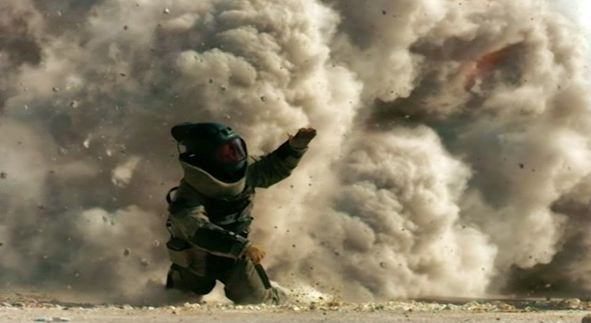Introduction to "Mobilization of Emotions in War Films"
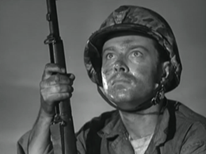 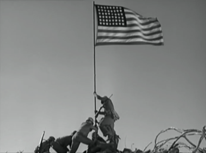 |
Like almost no other classical Hollywood genre, war films clearly intend to mobilize specific affective stances in their viewers. The war film embodies a character trait often ascribed to Hollywood cinema in general: it is said to be an extremely effective machine for the manipulation of emotion. We aim to reveal what knowledge of human emotions and sensuousness is implied in this. Therefore we are studying, on the one hand, the principle of the poetics of affect in war films as a process that forms certain emotional worlds and allows them to interrelate. On the other hand, we investigate the function of these processes. Our assumption is that they aim to create a sense of community, to integrate individual viewers into the values and ideas of the larger society, they target the affective foundation of identity and belonging; of the willingness to sacrifice and of commemoration. |
 |
| > DFG-project "Staging images of war as a mediated experience of community
|
We try to bring together what we all already know about genre films—how a melodrama is structured; the characters that make up a Western; the situations the hero of an action movie must face—and, using the example of the war film, ask which feelings are mobilized in this process.
Can the poetics of affect of the war film genre be described as a consistent pattern based on comparable dramaturgies of affect and on recurrent audiovisual strategies of staging and emotional stimulation? Which emotions are addressed and in which order? How are these appeals to our emotions orchestrated? Our assumption is that emotions are not influenced as much by the feelings portrayed as by the sequence and interaction of emotional values; activated in viewers by narrative constellations and, in particular, by the means of cinematic staging. For this reason we do not ask what a character is feeling, but rather what the world feels like if viewed through his eyes. How does fear move? What does the desire to fight look like? What does homesickness sound like? As a result of our analyses we have defined eight basic figurations of dramaturgical structure we call the pathos scenes of Hollywood war films. |
 |
| > Development of methods eMAEX-System |
These analyses and their evaluation were only possible thanks to the eMAEX system. It allows us to capture forms of emotionalization in audiovisual media using an empirical/descriptive procedure and provides us with a means of making our findings accessible. |
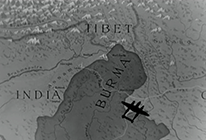 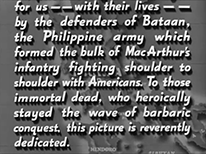 |
Building on this it is possible, on the one hand, to compare conceptually different portrayals of war made in different media, i.e to relate feature films to news reels and propaganda films, to TV-documentaries and videos on the internet. On the other hand we can add a historical perspective to our investigation: Do portrayals of war—from World War II to Vietnam and contemporary wars—share fundamental structures of emotionalization? What are the social, historical and political dimensions of dramaturgies of affect? Are the shared structures of these films strategies to reference and mobilize common emotions and a sense of community? These questions are informed by our firm belief that war films can not be meaningfully analyzed divorced from their embeddedness in emotionally charged social and media constellations. The enjoyment of these movies and the informative and persuasive value of other media must be seen in a joint context and related to the affective foundation of political community. |
 |
 |
This project brings together almost ten years of work with the war film genre, from seminars and lectures to a working group “The war film – media and emotion.” Since 2007 young researchers at the FU Berlin Film Studies Department have been investigating questions of the interrelation of genre films, viewer emotions and the vast circulation of images so central to twentieth century wars. We have also held many workshops on these topics and entered into discussions on possible approaches and lines of questioning with, among others, Thomas Elsaesser, Robert Burgoyne, Elisabeth Bronfen, Michael Wedel, Drehli Robnik and Marcus Stiglegger. |
 |
Lectures, conferences, workshops
Workshop: War as Mediated Experience. 18.-19.10.2012.
Hermann Kappelhoff: Die Affektpoetik des Hollywood-Kriegsfilms, Ringvorlesung "Genre und Serie", FU Berlin, 9.2.2012.
Eileen Rositzka, Christian Pischel, Cilli Pogodda: The Green Berets: Der Vietnamkriegsfilm als Herausforderung der klassischen Genrepoetik. Ringvorlesung "Genre und Serie", FU Berlin, 24.11.2011.
Hermann Kappelhoff: Affektmobilisierung und mediale Kriegsinszenierung. Ringvorlesung "Languages of Emotion": Sprache, Kultur, Gesellschaft, FU Berlin, 18.10.2011.
Matthias Grotkopp: Film genre and modality. The incestuous nature of genre exemplified by the war film. Éloge de la bâtardise au cinéma / In praise of cinematic bastardy. Paris (Université Paris Ouest Nanterre La Défense).
Hermann Kappelhoff: "Sense of Community": Die Filmische Komposition eines moralischen Gefühls. War – Literature, Media, Emotions. An international and interdisciplinary seminar on emotional strategies and effects of war-representations in literature and media. University of Aarhus. 2010
Hermann Kappelhoff: Macht und Gewalt des Propagandafilms: Frank Capras „Prelude to War" und Leni Riefenstahls "Tag der Freiheit", Vortrag im Rahmen der Siegen Kreuzer Lectures am 27. Oktober 2008.
Hermann Kappelhoff: Kalkulierte Raserei. Der Zorn des Rekruten im Kriegsfilm, Vortrag auf der Tagung des Einsteinforums „Passion(s) in Culture(s):Von Achill bis Zidane. Zur Genealogie des Zorns“ vom 11.-13.12.2008.
Workshop: Der Hollywood Kriegsfilm. 08. – 09.12.2007
http://www.geisteswissenschaften.fu-berlin.de/we07/service/archiv/workshop_hollywood_kriegsfilm.html
Publications
In press: Kappelhoff, Hermann, Gaertner, David und Pogodda, Cilli (Hg.): Mobilisierung der Sinne. Der Hollywood-Kriegsfilm zwischen Genrekino und Historie.
Project-related articles in this edition:
Bakels, Jan-Hendrik: Der Klang der Erinnerung. Filmmusik und Zeitlichkeit affektiver Erfahrung im Vietnamkriegsfilm,
Gaertner, David: Mit allen Mitteln. Hollywoods Propagandafilme am Beispiel von Frank Capras Why we Fight-Reihe
Haupts, Tobias: Coming home again. Zur Scheinnormalisierung des Kriegsheimkehrers im USamerikanischen Vietnamkriegsfilm
Kappelhoff, Hermann: Der Krieg im Spiegel des Genrekinos. John Fords They Were Expendable
Pogodda, Cilli: »Can’t we get our own fucking music?« Genre, Medialiät und Affektivität in Sam Mendes’ Jarhead
Kappelhoff, Hermann: »Sense of Community«: Die filmische Komposition eines moralischen Gefühls, in: Repräsentationen des Krieges. Emotionalisierungsstrategien in der Literatur und in den audiovisuellen Medien vom 18. bis zum 21. Jahrhundert, Søren R. Fauth, Kasper Green Krejberg, Jan Süselbeck (Hrsg.), Göttingen 2012, S. 43-57.
Grotkopp, Matthias, Kappelhoff, Hermann: Film Genre and Modality. The Incestuous Nature of Genre Exemplified by the War Film in: Sébastien Lefait, Philippe Ortoli (Hrsg.): In Praise of Cinematic Bastardy, Newcastle upon Tyne 2012, S. 29-39.
Haupts / Rositzka (2011): We recommend: Film „We who have seen war will never stop seeing it“: Neue Bilder zu alten Kriegen, in: KRAUT. Magazin für angewandte Kunst, 4/2011 S. 93f.
Kappelhoff, Hermann, Bakels, Jan-Hendrik: Das Zuschauergefühl - Möglichkeiten qualitativer Medienanalyse. Zeitschrift für Medienwissenschaft 5 (2). 2011
Kappelhoff, Hermann: Kriegerische Mobilisierung. Die mediale Organisation des Gemeinsinns. Frank Capras Prelude to War und Leni Riefenstahls Tag der Freiheit, in: Navigationen. Zeitschrift für Medien- und Kulturwissenschaften. Jg. 9, H 1, 2009. Marburg 2009, S.151-165.
Pischel, Christian: Grenzverläufe filmischer Topographien: Gewalt gegen die Gemeinschaftlichkeit in Elephant und Pearl Harbor. In: Domsch, S. (Hrsg.). Amerikanisches Erzählen nach 2000. Eine Bestandsaufnahme. S. 319-337. München 2008
Kappelhoff, Hermann: Shell shocked face: Einige Überlegungen zur rituellen Funktion des US-amerikanischen Kriegsfilms. In: N. Suthor, E. Fischer-Lichte (Hrsg.): Verklärte Körper, München 2006, S.69-89
________________________
Picture credits
Picture 1 - 2: Stills from SANDS OF IWO JIMA, Allan Dwan, USA 1949
Picture 3: Still from OBJECTIVE, BURMA!, Raoul Walsh, USA 1945
Picture 4: Still from THE GREEN BERETS, John Wayne & Ray Kollegg, USA 1967
Picture 5: Still from THE HURT LOCKER, Kathryn Bigelow, USA 2008
Picture 7: Still from OBJECTIVE, BURMA!, Raoul Walsh, USA 1945
Picture 8: Still from BATAAN, Tay Garnett, USA 1943





